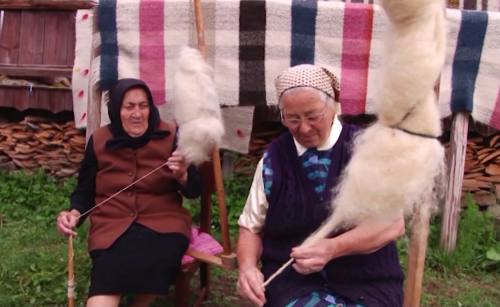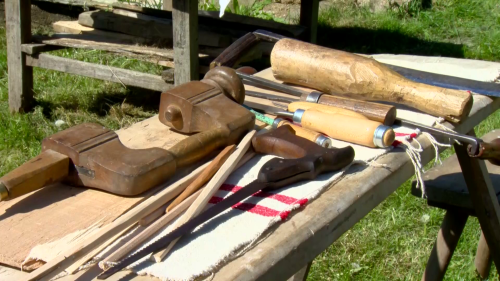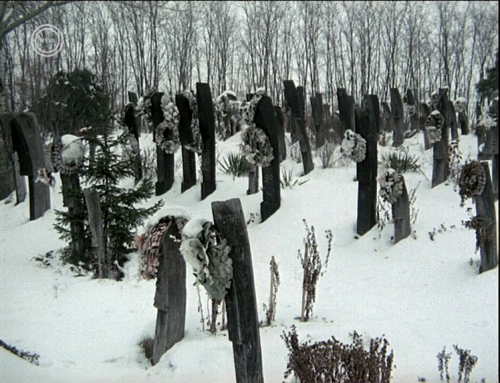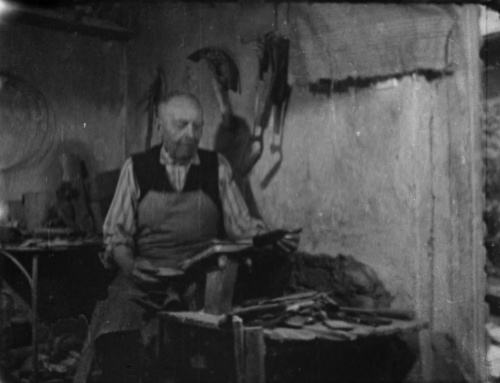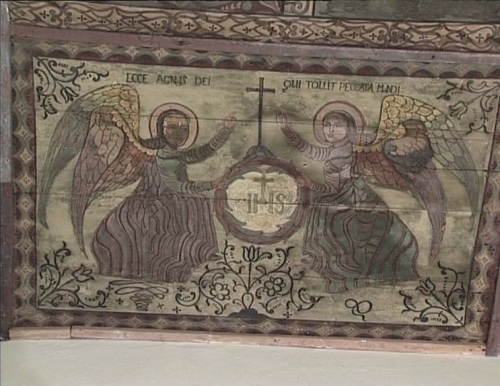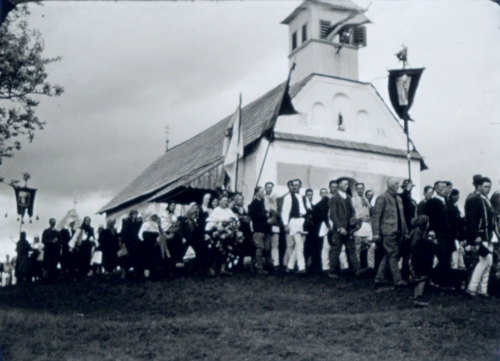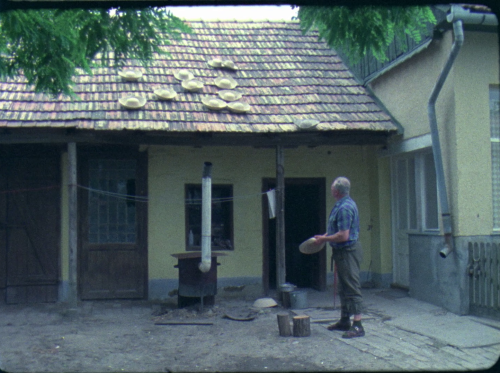Zoltán Rockenbauer
Moving Pictures
A selection from Hungarian ethnographic films
The satellite exhibition of the 2nd Salon of Folk Art pays tribute to the almost one hundred years of Hungarian ethnographic filmmaking. The explosive technical development that took place in the 19th century significantly contributed to the rapid erosion of traditional peasant culture but it also opened up new opportunities for ethnographic research and the preservation of traditions by making the observation and recording of rural life ever more accurate through equipment such as cameras, phonographs and film cameras.
Of these devices it was the phonograph that was incorporated in its own right into Hungarian folk music research so quickly and professionally as nowhere else in the world: Béla Vikár started recording folk songs with a wax cylinder phonograph as early as in 1896, and, following in his footsteps, Béla Bartók and Zoltán Kodály began to systematically collect the song treasure of the Carpathian Basin in 1906. The use of cameras also proved to be an obviously useful tool so the domestic folk dresses and customs were captured in photographs ever more frequently from the second half of the 19th century. However, film cameras were given a role relatively late after their invention in 1895 since decades passed before ethnographers working under rural circumstances had access to devices suitable for making recordings of the desired length. It was even more time before sound film forged ahead, which is why the benefits of motion pictures was not regarded by researchers as a practical means of collecting besides the traditional methods.
After World War II filmmaking was given a new impetus. Of course some of the recordings were not made with a strictly scientific purpose and the newsreels of „the people’s democracy” contained ample footage presenting the rural environment of the peasantry. Even recordings used for progapan da included quite a lot of footage that are authentic from an ethnographic perspective. While MAFILM was the maker of ethnographic films of popular science in the 1950s and 1960s, its place was gradually taken over by the Hungarian Television from the next decade onwards, which resulted in an increased technological professionalisation, while it pushed the more descriptive genre of professionally immaculate documentation into the background. In recent times the Hungarian Academy of Arts has been conducting a programme aimed at the systematic preservation of film traditions. The Műcsarnok exhibition seeks to present a selection of this extensive and diverse material through highlighting some characteristic excerpts.
The Hungarian pioneer of ethnographic filmmaking was Sándor Gönyei,who shot films tirelessly, in numerous locations and folklore themes from 1926. It was also him who accompanied and gave advice to Elizabeth C. Rearick, who came from the US to Hungary in 1932 with the express aim of studying the lifestyle, customs and dances of the peasantry. The footage made with a mechanical motor-driven 16 mm camera was subtitled in English, and these etudes of a somewhat amateur charm are now invaluable resources since, according to our knowledge today, they are the oldest surviving documents of Hungarian ethnographic filmmaking.
Gönyei’s earliest films unfortunately did not survive but in the 1930s, when the technical circumstances improved, he shot in several locations again. His spools about setting up the cserény, i.e. the mobile home of shepherds in the village of Bugac, are real curiosities. Given the equipment of the day, he was unable to record sound; however, his monographic quality recordings of Hungarian, Sekler, Chango and Gypsy dances often provide more information about the movement and dance dialects than notes taken with the traditional method.
It was also under the influence of Gönyei that László Keszi-Kovács embarked upon his career in film. He began shooting on his own from 1937 and it was upon his initiative that ethnographic film studies were launched as part of the higher education of museology at the University of Kolozsvár (now Cluj-Napoca, Romania) in the 1940s. In addition to extensively collecting folk dance, his other focus was to capture the various crafts, agricultural work tools and methods on film. His projects, carried out with utmost precision for decades, were deprived of any romanticising, and besides meeting the highest standards of scientific documentation and popular science, they were often made for educational purposes. His film about a master potter in Dőr was an example for the latter: it follows the entire work process from sourcing the clay to selling the ready glazed product on the market.
At the start of her career Anna Raffay shot her films about folk customs together with István Szőts, a ’silenced’ feature film director, upon the commission of the Folk Art Institute. From the 1960s she carried out her own systematic collecting, while at the same time tirelessly devoting her energy to help the amateur film movement, because of which film clubs popped up one after the next and, within their framework, 16 mm films on preserving traditions were made in relatively great numbers. She was also instrumental in the annual organisation of the Hungarian Festival of Ethnographic Film from 1968. For the Műcsarnok exhibition we have selected a short film from Anna Raffay’s extensive oeuvre that documents the importance of the folk art movement for the public of the time through the 10th National Bori Kis Jankó Memorial Competition.
Along with the bourgeoning interest in applied folk art, ever more attention turned to naive art inspired by folklore, whose celebrated star was Juli Vankóné Dudás, a painter from Galgamácsa, who had one exhibition after the next not only in Hungary but abroad too, from Paris to Havana. Domokos Moldován began filming a series in 1966 for the Hungarian television about peasant painters in Hungary, and the most successful part is the one about Juli Vankóné Dudás. Moldován also made an adaptation of the theme for MAFILM in such a way that he decisively focussed on artistic activity; therefore, the Műcsarnok selection contains the latter.
The first short film made by Ferenc Olasz, titled Graveposts, takes viewers away from traditional documentaries and into the world of autonomous art films. While the stark sequences record the olden graveposts of Reformed cemeteries in Eastern Hungary with great accuracy indeed, the film has no verbal commentary and the sound is restricted to music, laments and dirges. Although the film’s documentary value is undeniably great, it is primarily about life and the passing of time: a confession of lyrical beauty.
Due to the specific features of the installation of the hall, the selection of films presented here did not allow the showing of longish films or even lengthier excerpts. We strove to provide a selection from the beginnings to the most recent times that is as varied in regard to the times, locations, themes, styles and makers of the pieces as possible.
Zoltán Rockenbauer PhD
curator of the exhibition
Directors of the films selected to the exhibition:
GALÁNFI András, GÖNYEI Sándor, JENES József, KESZI KOVÁCS László, LEHEL László,
MOLDOVÁN Domokos, OLASZ Ferenc, PAPP János, RAFFAY Anna, TARI János, VIDÁK István – NAGY Mari
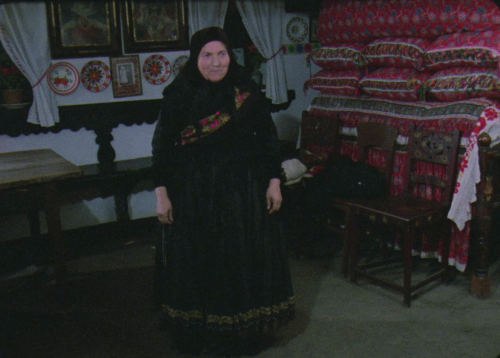
Changes in Folk Dress in Mezőkövesd. In Memoriam István Györffy
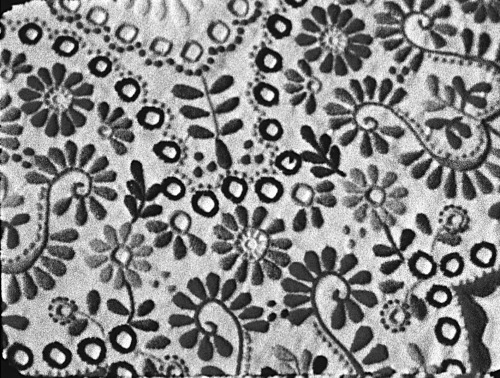
Exhibition of the 10th National Bori Kis Jankó Memorial Competition in Mezőkövesd
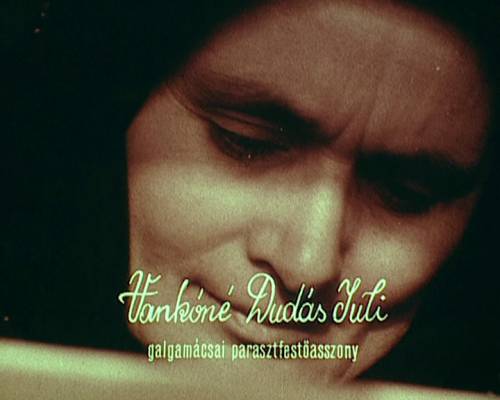
Juli Vankóné Dudás, a Peasant Paintress from Galgamácsa

The Potter of the Village of Dőr III: Glazing-fring, fair
